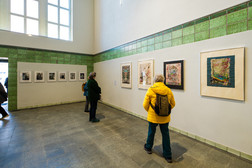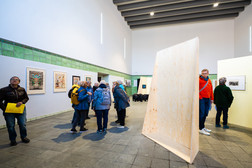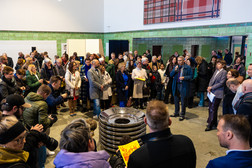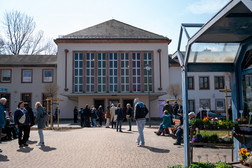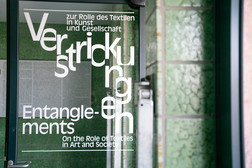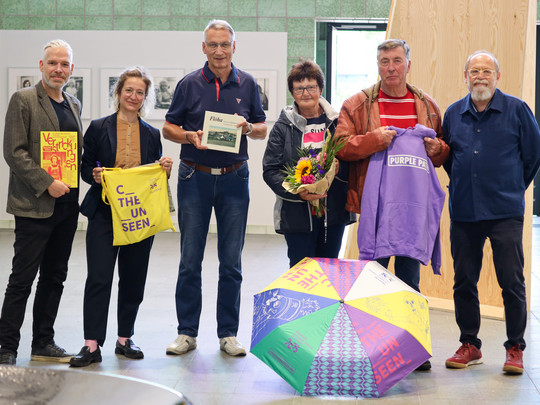Entanglements: On the role of textiles in art and society
Artistic positions from the ifa art collection
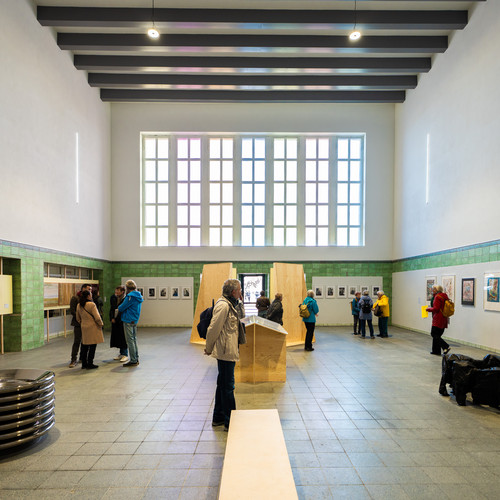
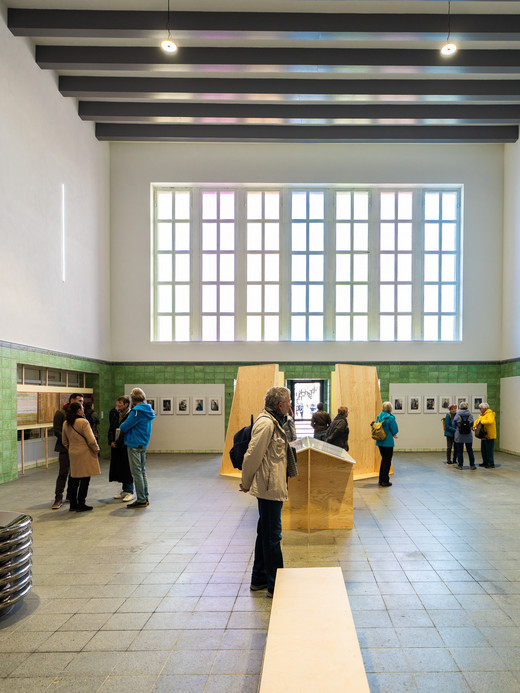
Textile traditions and production are a common thread running through the region around Chemnitz. Flöha was an important textile centre until 1994, and in GDR times thousands of workers passed through the station every day on their way to the factories. Now the railway station, which has been renovated for the Capital of Culture, will become the setting for "Entanglements". On display are works of modern and contemporary art in the context of textiles: artists include Antje Engelmann, Katharina Fritsch, Hermann Glöckner, Renate Göritz, Käthe Kollwitz, Helga Paris, Judith Raum, Reinhard Mucha, Rosemarie Trockel and Franz Erhard Walther. Curated by Susanne Weiß (ifa). In an extraordinary collaboration, the ifa - Institute for Foreign Cultural Relations is cooperating with the municipality of Flöha and Deutsche Bahn to realise this exhibition, presenting artists from its own collection in dialogue with local history. Textiles not only bring together tradition and innovation, but also the cause and effect of production and material, patterns and interpretations as well as values and paradoxes that influence our economic and social conditions.
When? until 03 August 2025
Wed-Mon 12:00-18:00 / Thu 12:00-20:00
Where? Kunstbahnhof Flöha, station concourse, Bahnhofstraße 2A, 09557 Flöha I Admission: free
The exhibition is part of the PURPLE PATH art and sculpture trail. The project is being realised together with the town of Flöha and is taking place in cooperation with the Wüstenrot Foundation.
Textile positions
Entanglements brings together important pioneers of 20th century art. From Käthe Kollwitz, one of the most impressive representatives of critical realism, who portrayed the plight of the weavers' guild like no other, to Hermann Glöckner, who came to abstract art through his training as a pattern draughtsman, who became an important representative of concrete art in the GDR and thus also a border crosser between East and West, Franz Erhard Walther, who turned to textiles as a performative and sculptural material in the age of conceptual art, and Rosemarie Trockel, who became famous in the 1980s with her knitted pictures. The sculptor Asta Gröting uses seemingly everyday objects and transforms them into ambiguously legible images. Renate Göritz was one of the most important representatives of collage in the GDR. Like Helga Paris, she lived in Berlin and influenced the scene there with her art. Her large-format collages are being exhibited again for the first time since 1991. The artists Judith Raum and Antje Engelmann tell very different stories with their videos. Judith Raum turns her attention to the Bauhaus textile workshop and everyday materials and focuses on the hierarchies of perception. Antje Engelmann uses her own family history to examine how the traditions of the Danube Swabians are characterised by migration and craftsmanship and interweave personal and collective memory.
The art collection of the ifa - Institut für Auslandsbeziehungen currently comprises around 24,000 works from various disciplines of modern and contemporary visual art: architecture, photography and design are represented as well as monographic exhibitions by Rosemarie Trockel or Wolfgang Tillmans. Around half of these come from purchases of travelling exhibitions, for which curators have developed monographic structures since the 1960s, presenting outstanding artistic positions from Germany. Another focus is on socio-politically relevant projects that reflect contemporary artistic trends and movements of the 20th and 21st centuries. They are presented as travelling exhibitions in international museums and cultural institutions, but also outside the major metropolises. There are currently 20 exhibitions on show worldwide, which have also been co-organised since the 2010s.
The second half of the ifa art collection originates from the collection of the Centre for Art Exhibitions of the GDR (ZfK), parts of which were taken over in 1991. This has been researched in cooperation with the Wüstenrot Foundation since 2023. On thedigital art platform ifa Agorathe ifa's unique art collection is made visible and tangibleagora.ifa.de/topics
